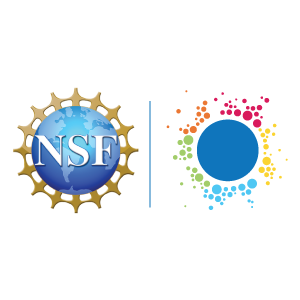The Department of Education is one of several federal agencies collaborating with the National Science Foundation and the NSF INCLUDES National Network to scale and sustain progress to broaden participation in STEM academic pathways and careers. Keep reading below to learn about the Department’s investments in STEM.
***
Contributed by The Department of Education

While most of the Department of Education’s budget is distributed to the states and school districts via various formulas that target low-income students, the Department also manages a variety of competitive grants that prioritize Science, Technology, Engineering and Math (STEM) education, including Computer Science (CS), content; rural populations; and Opportunity Zones (distressed economic areas). In effect, the use of these priorities allows the Department to target funds to support low-income (and frequently diverse) student populations.
In Fiscal Year (FY) 2019, the Department invested $540 million to support STEM and CS through competitive grants. These funds will be used to prepare the STEM teacher corps, provide graduate student fellowships in areas of national need, increase the number of low-income students who are prepared to enter and succeed in postsecondary education, and support state efforts to expand and improve the transition of high school Career and Technical Education (CTE) students to postsecondary education and employment through apprenticeships, among other areas. These investments expand on support provided in FY 2018. The Department’s FY 2020 forecast of funding opportunities can be found here. A few example programs are highlighted below.
- The Education and Innovation Research (EIR) grant has 3 categories, each requiring a different level of evidence. In the FY 2019 grant cycle, the early stage grant had a STEM/CS competitive priority while the mid-phase and expansion grants included a rural set-aside. For FY 2020, Congress appropriated $190M for EIR, including a $65 million set aside for social emotional learning (SEL) grants and $65 million for STEM grants.
- The Office of Postsecondary Education has several competitive grants designed to support minority students in their pursuit of STEM degrees and careers. For example, the Minority Science & Engineering Improvement Program (MSEIP) is designed to increase the number of underrepresented ethnic minorities, particularly women, in scientific and technological careers. The FY 2020 appropriation included $12.6M for MSEIP.
- The Hispanic Serving Institutions-STEM grant program aims to increase the number of Hispanic and other low-income students attaining degrees in the fields of STEM. The FY 2020 appropriation included $94M for HSI-STEM.
- The Office of Career, Technical and Adult Education provides funds directly to states and supports a demonstration program called Pathways to STEM Apprenticeship for High School Career and Technical Education (CTE) Students. Further, under CTE/Perkins V, the Innovation and Modernization Program provides roughly $1.4 million annually to support innovative strategies and activities to improve and modernize career and technical education, including a focus on STEM/CS. The Department is seeking a $900M increase for CTE in the FY 2021 budget.
The Department is seeking peer reviewers for its FY 2020 competitive grant season, including in the STEM/CS areas (among others). This opportunity is a great way to help underserved communities and learn more about the Federal grantmaking process. Our Federal Register notice spotlights the needs of specific offices. To learn how to be considered as a reviewer, go here.
As an agency that is strongly engaged in fulfilling the aims of the 5-Year Federal STEM Strategic Plan, Charting a Course for Success: America’s Strategy for STEM Education, and a member of the NSF INCLUDES Federal Agency Affinity Group, the Department plans to (1) broaden its opportunities to a wider audience and (2) help amplify other agency efforts. To learn more about STEM education and the Department’s efforts to support this area, please visit the STEM webpage, subscribe to the Department’s STEM Newsletter, and tune into the STEM Briefing Series.


